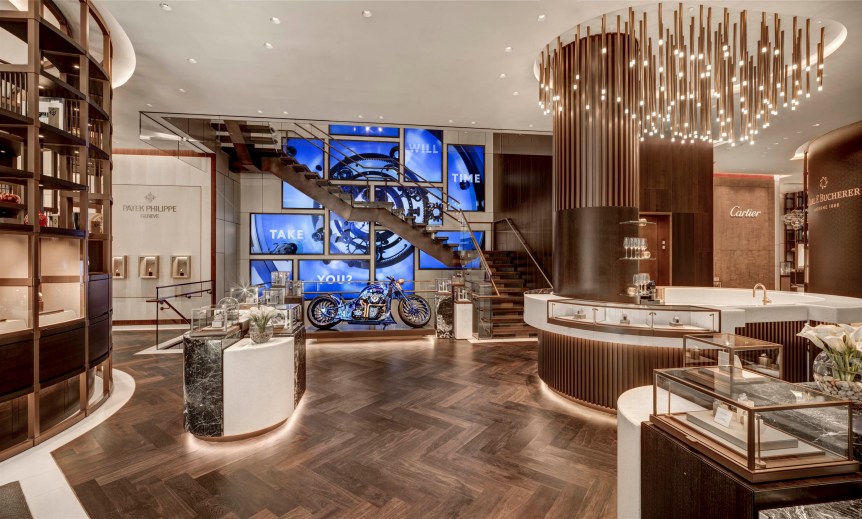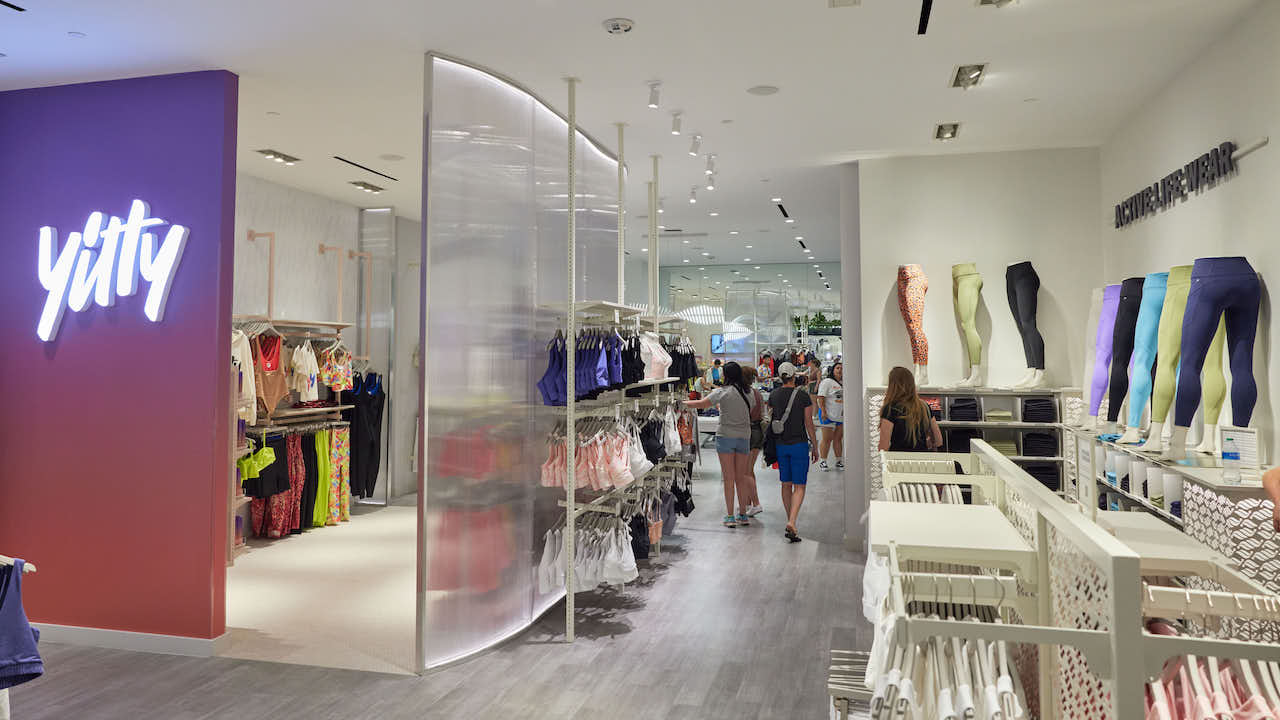Shop-in-shops are everywhere — here’s what it means for stores
With all the challenges retailers face today, it can help to call in reinforcements. Walk into Target, and you may find a small-scale Ulta shop a few aisles down from a mini Apple store. At Nordstrom, you may get fitted for a suit at an Indochino showroom or shop Asos pieces IRL in a dedicated branded space.
What may have once required a trip to the mall, a stop at your local big-box store and an online order can now be accomplished under one roof.
Shop-in-shops have proliferated in recent years as retailers have sought to draw in new customers and get the most out of their brick-and-mortar fleets. Brands, meanwhile, have seized on the strategy as an affordable way to gain a foothold in physical retail and raise awareness beyond their existing base.
“A lot of stores are now too large for present shopping habits, especially in the department store space, so retailers are being forced to adapt and think creatively,” said Neil Saunders, managing director of retail at analytics and consulting company GlobalData. “That’s very helpful for [forwarding] shop-in-shop innovation.”
Every square foot counts, so if a space isn’t attracting customers on its own, a partnership is a chance to enhance the offering.
As retailers integrate more of these small-scale spaces, though, flexibility and thoughtful design are essential.
Since Indochino launched at Nordstrom last summer, the custom suiting brand has opened 30 mini showrooms at the department store, a number it expects to double within the next year. The rollout has been even more efficient than expected, said CEO Drew Green. That’s not only because Indochino doesn’t carry inventory — its sales are by appointment and pieces are produced and shipped within two weeks — but also because Nordstrom already had the infrastructure in place to support it.
The department store has been staffed the showrooms with its own in-house menswear specialists and has leveraged its tailoring network to offer free alterations at any of its stores.
“That’s a really big deal for us, because when you think about Indochino, our reason for being is perfect fit,” said Green. “So whether we get it right on the first time or need to do a few alterations on the second fitting, alterations are part of the customer journey.”
For Nordstrom, meanwhile, having a customer come back into a store for an extra fitting is also a great opportunity to sell them a pair of sneakers or a designer fragrance.
For companies that operate multiple complementary brands, it makes sense to build stores with adaptability in mind.
Fabletics opened the first of its “generation four” stores last month in Murray, Utah with a dedicated shop-in-shop for sister brand Yitty. The shapewear brand, co-founded by pop star Lizzo and TechStyle Fashion Group, will have a presence in all 85 Fabletics stores nationwide, but the Utah location gives a sense of the company’s brick-and-mortar strategy moving forward. There, Yitty has its own exterior signage and section of the store with distinct branding, fixtures and displays.
Ron Harries, svp and head of retail at Fabletics, said that as the company rolls out more gen-four stores, all will have some version of the Yitty shop-in-shop concept. And with two other brands in the portfolio — TechStyle also owns JustFab and Savage x Fenty — it is planning with further integration in mind.
“We’re always looking at brand expansion, category expansion. There are so many things that go into these spaces, it’s important that we’re developing for the future,” he said. “You can’t sit still in this business. You’ve constantly got to be thinking toward the future in whatever it is you’re doing — your training, your technology, your store design.”
Bringing more than one brand together within a single store creates its own set of challenges, however. It’s a delicate balance between giving brands the chance to communicate their identity and ensuring overall cohesiveness within the space, said Helen Herrick, studio director at MBH Architects.
“You don’t want there to be so many different signs and so many different colors and so many different finishes that it starts to create visual noise that gets in the way of all the beautiful merchandise,” she said.
This is particularly important when working with high-end brands with exacting tastes. MBH Architects recently led the redesign of luxury watch retailer Bucherer’s three-level Manhattan flagship. The store features the Swiss group’s in-house brand, Carl F. Bucherer, alongside luxury names like Rolex and Cartier.

The brands all benefit from common features such as bars on every floor, central lounge spaces and the custom Harley-Davidson motorcycle drawing in passersby, but each is showcased in its own space, with formats ranging from a counter to a mini-boutique.
In any shop-in-shop partnership, there will be a degree of compromise between the incoming brand and the host retailer, said Bevan Bloemendaal, chief brand and creative officer at the architecture and design firm Nelson Worldwide. What’s important is to honor the essential elements that each party brings to the table.
“What are those iconic assets that you just don’t mess with? Those can be font treatments, they can be illustrative opportunities, they can be color — those are the red threads that will bring in that symbiotic relationship and cohesiveness,” he said.
If brands and retailers play to their strengths, then the whole can be greater than the sum of its parts.





